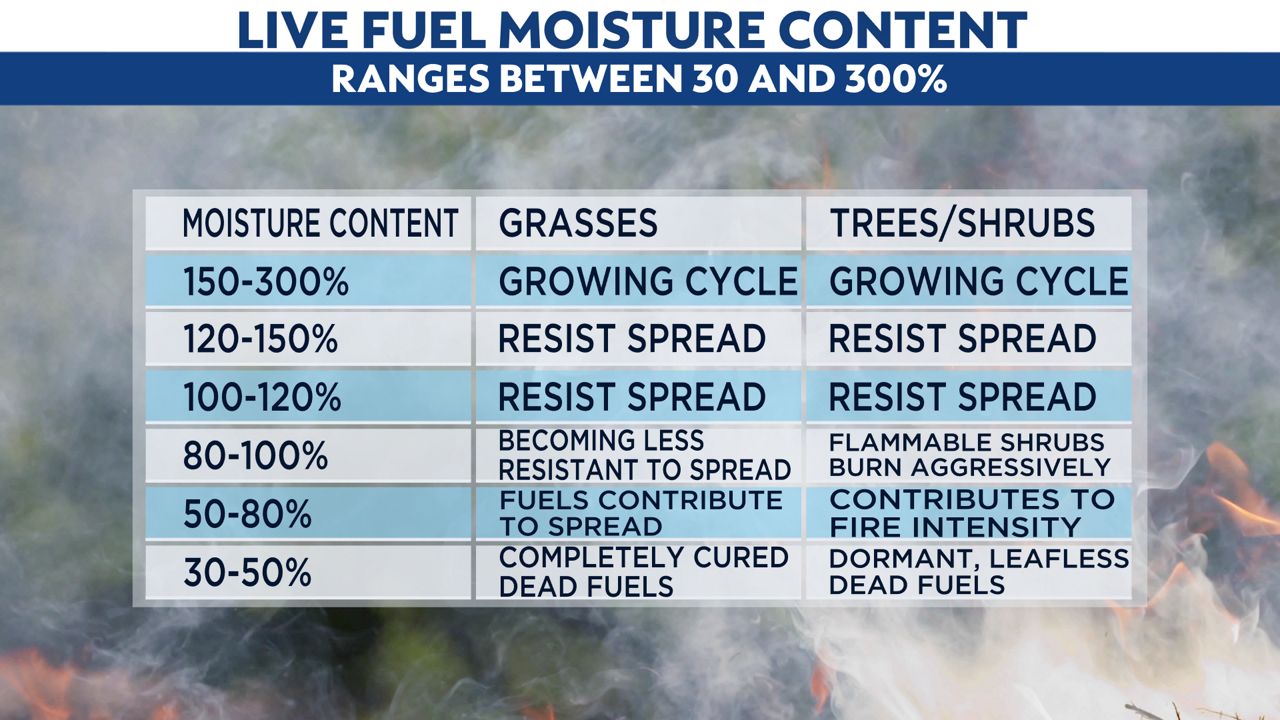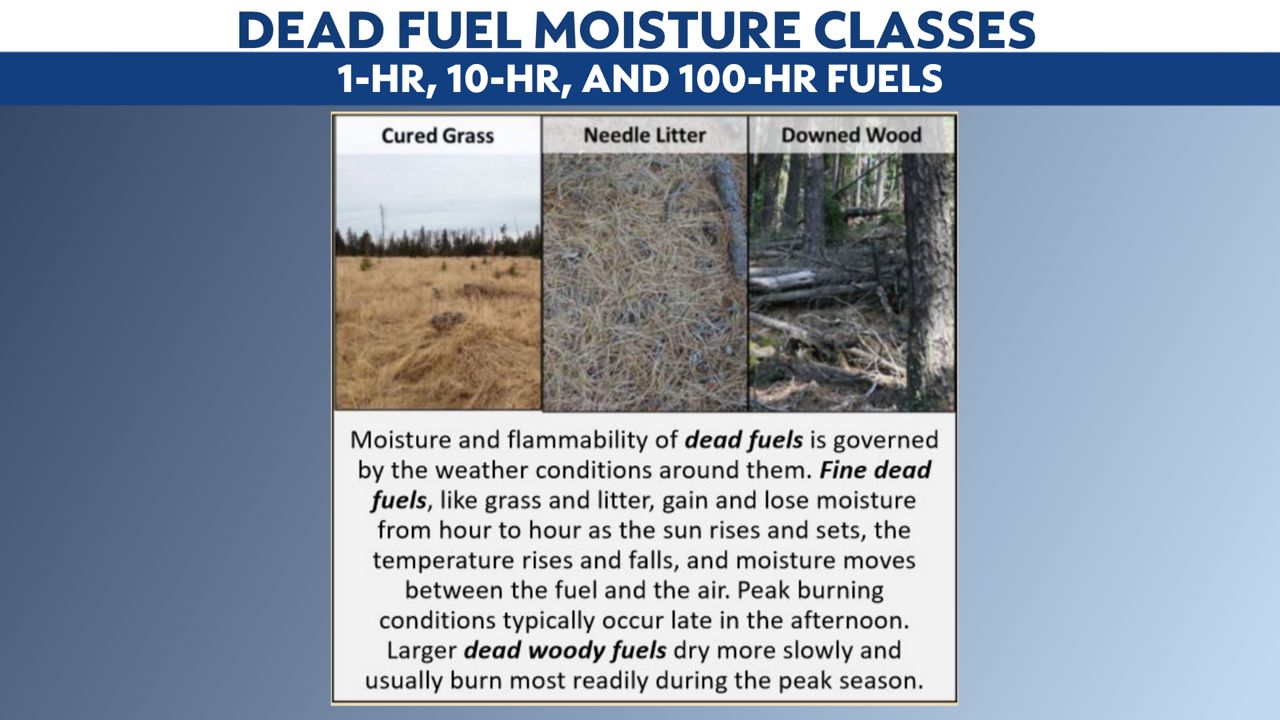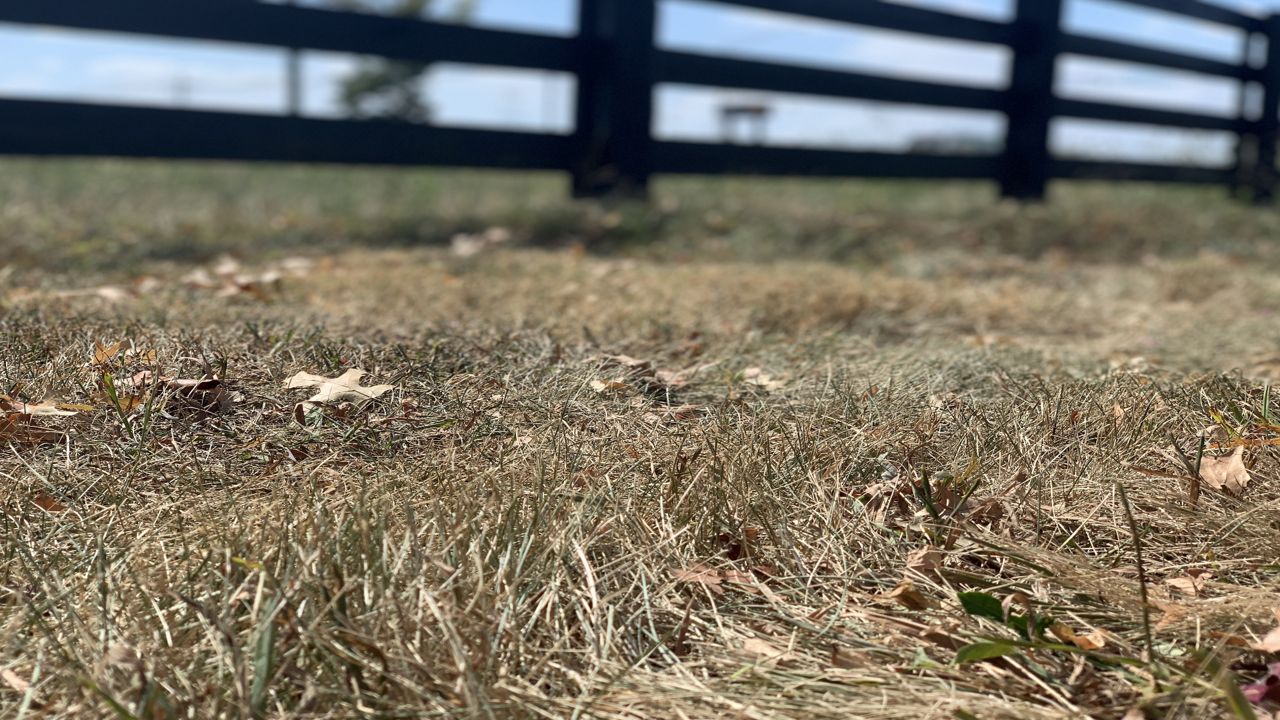Have you ever watched a weather forecast during a high fire danger period and wondered why relative humidity is so important? What does it mean when we say "critically dry" fuels?
This technical terminology may not be widely understood, but considering it is fundamental in understanding fire danger. We want to explain why it matters.
Relative humidity is the moisture in the air relative to the temperature. While it alone does not tell us exactly how much moisture is in the air, we can infer it based on the relative humidity values.
Lower values represent drier air, and higher values represent more moist air.
Critically dry relative humidity values fall below 20%, often prompting a Red Flag Warning, especially when coupled with sustained winds above 12 mph.
Fuels are simply wildland vegetation, such as grasses, shrubs and trees. Fire behavior is highly sensitive to the moisture content of these fuels.
Higher fuel moisture content:
- Delays ignition by increasing the heat of ignition, or heat needed to start a wildfire
- Decreases fuels consumed by fire
- Increases particle residence time, or the time during which a flame is in contact with a fuel
We measure live and dead fuel moisture. Live fuel moisture values range from as low as 30% to as high as 300%.

Live fuel moisture content depends on:
- Properties of the fuel
- Atmospheric conditions
Dead fuel moisture only responds to environmental conditions and fluctuates often due to changing weather. Values rarely drop below three or four percent.

Cured (dead) finer fuels like grass can experience quick and dramatic changes in fuel moisture content.
Even one day after a soaking rain, the shining sun can quickly dry up the grass. Therefore, dead grasses are classified as 1-hour fuels because their moisture content takes approximately that long to respond to changing weather conditions.
Cured coarser fuels experience a longer time lag to either moisten or dry out. These fuels are classified as 10-hour, 100-hour and even 1000-hour fuels, depending on their size.
Again, the time lag is an approximation of how long it takes the fuel to respond to changing weather conditions.



